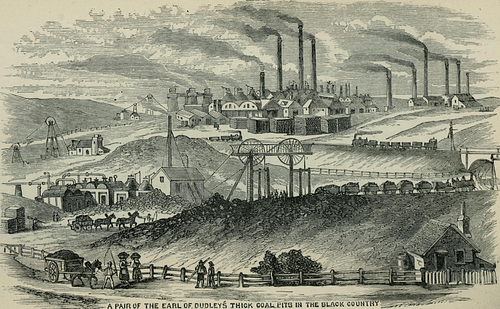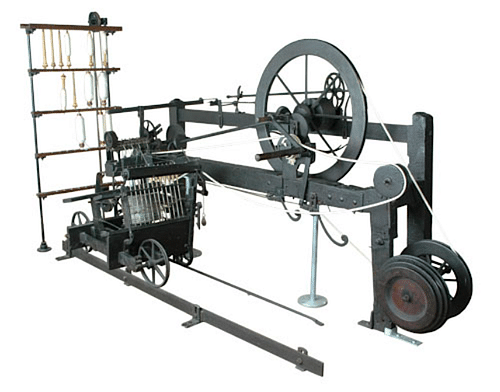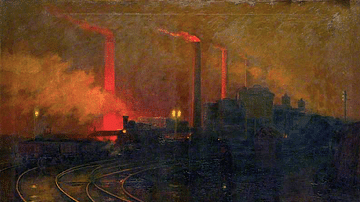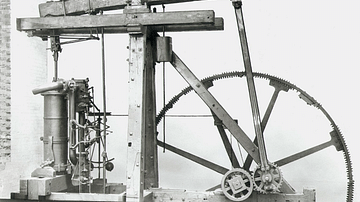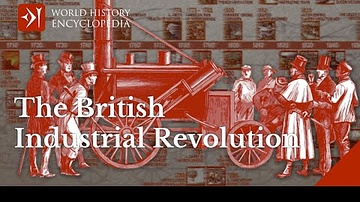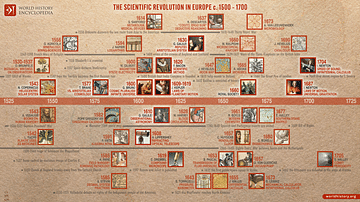The consequences of the British Industrial Revolution (1760-1840) were many, varied, and long-lasting. Working life in rural and urban settings was changed forever by the inventions of new machines, the spread of factories, and the decline of traditional occupations. Developments in transportation and communications meant life in the post-industrial world was more exciting and faster, with people more connected than ever before. Consumer goods became more affordable to more people, and there were more jobs for a booming population. The price to pay for progress was often a working life that was noisy, repetitive, and dangerous, while cities grew to become overcrowded, polluted, and crime-ridden.
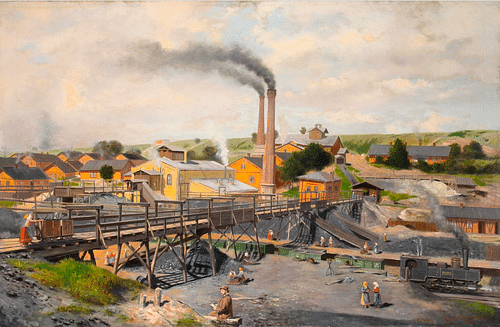
The impact of the Industrial Revolution included:
- Many new machines were invented that could do things much faster than previously or could perform entirely new tasks.
- Steam power was cheaper, more reliable, and faster than more traditional power sources.
- Large factories were established, creating jobs and a boom in cotton textile production, in particular.
- Large engineering projects became possible like iron bridges and viaducts.
- Traditional industries like hand weaving and businesses connected to stagecoaches went into terminal decline.
- The cost of food and consumer goods was reduced as items were mass-produced and transportation costs decreased.
- Better tools became available for manufacturers and farmers.
- The coal, iron, and steel industries boomed to provide fuel and raw materials for machines to work.
- The canal system was expanded but then declined.
- Urbanisation accelerated as labour became concentrated around factories in towns and cities.
- Cheap train travel became a possibility for all.
- Demand for skilled labour, especially in textiles, decreased.
- Demand for unskilled labour to operate machines and work on the railways increased.
- The use of child and women labour increased.
- Worker safety declined and was not reversed until the 1830s.
- Trade unions were formed to protect workers' rights.
- The success of mechanisation led to other countries experiencing their own industrial revolutions.
Coal Mining
Mining of tin and coal has a long history in Britain, but the arrival of the Industrial Revolution saw unprecedented activity underground to find the fuel to feed the steam-powered machines that came to dominate industry and transport. The steam-powered pump was invented to drain mines in 1712. This allowed deeper mining and so greatly increased coal production. The Watt steam engine, patented in 1769, allowed steam power to be harnessed for almost anything, and as the steam engines ran on coal, so the mining industry boomed as mechanisation swept across industries of all kinds. This phenomenon only increased with the spread of the railways from 1825 and the increase in steam-powered ships from the 1840s. Coal gas, meanwhile, was used for lighting homes and streets from 1812, and as a source of heat for private homes and cookers. Coke, that is burnt coal, was used as a fuel in the iron and steel industries, and so the demand for coal kept on growing as the Industrial Revolution rolled on.
There were four principal coal mining areas: South Wales, southern Scotland, Lancashire, and Northumberland. To get the coal to where it was needed, Britain's canal system was significantly expanded as transportation by canal was 50% cheaper than using roads. By 1830, "England and Wales had 3,876 miles [6,237 km] of inland canals, up from 1,399 [2,251 km] in 1760" (Horn, 17). Britain produced annually just 2.5 to 3 million tons of coal in 1700, but by 1900, this figure had rocketed to 224 million tons.
Manufacturing
The steam engine transformed industry, particularly one of Britain's biggest sectors: textiles. Spinning and weaving had been cottage industries centred around a single or a few households. A series of machines were invented which revolutionised how cotton was cleaned, spun, and woven. These devices were the flying shuttle (John Kay, 1733), spinning jenny (James Hargreaves, 1764), waterframe (Richard Arkwright, 1769), spinning mule (Samuel Crompton, 1779), power loom (Edmund Cartwright, 1785), cotton gin (Eli Whitney, 1794), and Robert's loom and self-acting mule (Richard Roberts, 1822-5). Mechanisation permitted the establishment of textile mills and factories where first water-powered and then steam-powered machines did work faster and cheaper than was ever possible by hand. By the 1830s, 75% of cotton mills were using steam power and cotton textiles accounted for half of Britain's total exports.
Some protested violently at the advent of mechanisation, particularly skilled textile workers. The period between 1811 and 1816 saw the Luddites, named after their mythical leader Ned Ludd, smash factory machines. These protestors were dealt with harshly, and the crime of damaging machines could lead to the death penalty.
Despite the turbulence in traditional ways, many more jobs were created by mechanisation than were lost in older industries. In 1830, one in 80 Britons worked in the 4,000+ textile mills across the country. The new jobs were quite different from those in the past. Factory workers had to very often perform repetitive tasks, and they were ruled by the clock. Previously, workers had often been paid for a specific project (piecework) and worked at their own rhythm. In the new factory system, a worker performed only one task in a series that involved many other workers. On the other hand, factory jobs ensured regular pay, something that seasonal agricultural workers, especially, appreciated the value of.
Agriculture
Industrialisation in Britain was dramatic, but this did not mean that agriculture declined. On the contrary, innovations and mechanisation helped make agriculture more efficient than ever and so able to feed the ever-growing population. In 1800, agriculture involved 35% of Britain's total workforce, and even by the end of the Industrial Revolution in 1841, 1 in 5 Britons still worked in farming. Machines countered Britain's relatively high labour costs, and they compensated for the trend of people moving away from the country and into the cities.
The Rotherham swing plough (Joseph Foljambe, 1730), winnowing machine (Andrew Rodgers, 1737), threshing machine (Andrew Meikle, 1787), reaping machine (Cyrus McCormack, 1834), and steam-powered flour mills all transformed harvesting and food production. Mobile steam engines were used to cut drainage trenches and pump out waterlogged areas to make them useful for agriculture. With the enclosure system, more common land was utilised for farming. Mass-produced agricultural implements were stronger, sharper, and longer-lasting than traditionally-made tools thanks to new metalworking machines. Scientists developed better fertilisers to increase yields. All of these improvements made food cheaper and helped many more people eat healthier diets, and so life expectancy went up, particularly regarding children.
There were negative effects of the Industrial Revolution on the agricultural sector. Jobs were lost, especially seasonal ones as farmers now hired machines at harvest time. Some labourers attacked the new machines that had taken their livelihood, notably during the Swing Riots of 1830-32. Land became more valuable, and so rents were increased, which led to many small farmers having to give up their farms.
Labour
There was a great increase in the use of female and child labour, particularly in factories and textile mills. One reason was that both groups were cheaper than male workers, another reason was that women and children had smaller and often more dexterous hands, which were advantages when using some machines. All three groups tended to work 12-hour shifts until this practice was reduced by law to 10 hours (in 1847). Children, on average, began working as young as eight in mines and factories, and so "at least half of nominally school-age children worked full-time during the industrial revolution" (Horn, 57). In the textile industry, women made up half of the workforce.
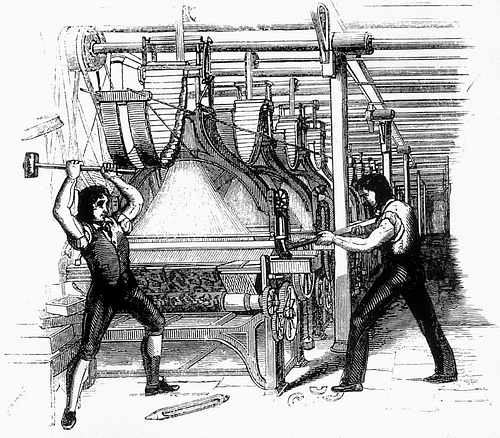
The health and safety of workers were often a low priority for employers until laws made these an obligatory consideration. Lung diseases caused by coal dust were a common problem for miners. Working in the damp conditions of a textile mill had a similar negative effect on workers there. Factories were very noisy, and many workers suffered hearing loss to various degrees. Repetitive stress injuries were common as workers performed the same tasks all day, six days a week. Dangerous substances were commonly handled, such as lead and mercury. Machines were large, heavy, had fast-moving parts, and were prone to breakages, all of which could lead to accidents like lost fingers, limbs, or worse.
Successive governments were reluctant to restrict business owners in principle since it was considered possibly damaging to the national economy to interfere. Workers attempted to act collectively to protect their interests, but the formation of trade unions was resisted by employers and politicians. Indeed, the government banned trade unions between 1799 and 1824. From the 1830s, though, Acts of Parliament began to ensure workers had improved protection and working conditions. Trade unions like the Amalgamated Society of Engineers (formed in 1851) then grew in stature to ensure these gains in rights were not lost.
Transportation & Communication
For many, the sight and sound of a train tearing through one's local countryside was the most visible and impressive result of the Industrial Revolution. Trains were first used on short lengths of track at mines. In 1825, the first passenger train ran from Stockton to Darlington. The first intercity passenger line was opened in 1830. Running between Liverpool and Manchester and pulled by Stephenson's Rocket locomotive, the line was such a great success it led to the railways spreading everywhere. Trains also revolutionised goods transport since a single train could carry 20 times the cargo of a canal boat and reach its destination eight times faster. This made consumer goods and raw materials transported by train cheaper than previously.
From 1848, passengers could travel from London to Glasgow in 12 hours, a journey that would have taken many days by stagecoach. By 1870, Britain had over 24,000 kilometres (15,000 miles) of rail lines. People were more connected than ever before. Even the less well-off could buy cheap excursion tickets, and so seaside resorts boomed. A trip from London to Brighton by stagecoach took five days and cost £1.20 in 1830; ten years later, the same journey by train took three hours and cost 40 pence.
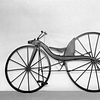

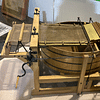
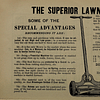
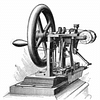
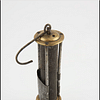
A Gallery of 30 Industrial Revolution Inventions
Businesses, especially food producers, could now reach new markets which previously had been too expensive or too far away for fresh produce to be sold there. No longer restricted to local markets where they were already well known, businesses invested in countrywide advertising inside the new bustling train stations. The railways created tens of thousands of new jobs. Steam was also used to power metal ships, which were faster and more reliable than vessels that used only sails. Dockyards were another significant employer. The rise of steam-powered transport perpetuated the success of the coal, iron, and steel industries. In 1850, 2.25 million tons of pig iron were produced in Britain, that compares to 70,000 tons in 1786. Sheffield became the world's major steel producer; the city had five steel manufacturers in 1770, but 135 by 1856.
Communication was greatly sped up by the railways. Trains delivered newspapers from one area of the country to the other on the same day. Trains delivered letters and parcels in 24 hours. The railways inspired the invention of the electrical telegraph, invented in 1837 by William Fothergill Cook (1806-1879) and Charles Wheatstone (1802-1875), so that train drivers could communicate with stations. Soon the public could send private messages, and journalists, too, used the telegraph to contact their offices, and so the delivery of news sped up remarkably. As the Industrial Revolution spread to other European countries and the United States, so more communication and travel opportunities arrived. Ocean-crossing steamships and intercontinental telegraph cables made the world more connected than ever before.
As in other areas of the Industrial Revolution, new modes of transport brought some negative consequences. Canals and stagecoach companies went into decline. Some people were obliged to give up their land to make way for the railway lines. There was more air pollution and noise, and the countryside was spoilt by the tracks, bridges, and tunnels built to allow trains the most direct route between destinations.
Effects on Society
The population of Britain rocketed from 6 million in 1750 to 21 million in 1851. The 1851 census in Britain revealed that, for the first time, more people were living in towns and cities than in the countryside. The populations of cities and towns like Manchester, Liverpool, Sheffield, and Halifax increased ten times over in the 19th century. More young people meeting each other meant marriages happened earlier, and the birth rate went up compared to societies in rural areas.
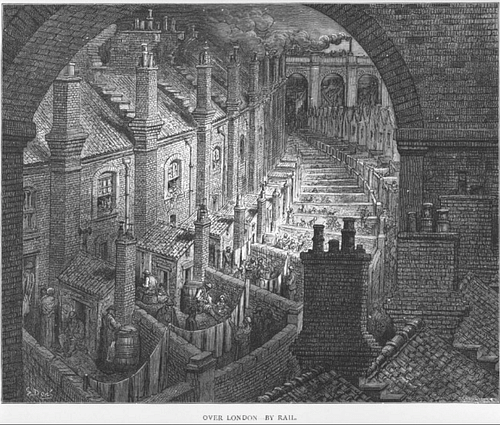
Life became cramped in the cities that had grown up around factories and coalfields. Many families were obliged to share the same home. "In Liverpool in the 1840s, 40,000 people were living in cellars, with an average of six people per cellar" (Armstrong, 188). Pollution became a serious problem in many places. Poor sanitation led to the spread of diseases. In 1837, 1839, and 1847, there were typhus epidemics. In 1831 and 1849, there were cholera epidemics. Another effect of urbanisation was the rise in petty crime. Criminals were now more confident of escaping detection in the ever-increasing anonymity of life in the cities.
The education of many children was replaced by a working day, a choice often made by parents to supplement a meagre family income. There were some rudimentary schools, and some employers provided a certain level of education, but compulsory education for 5-to-12-year-olds and the institutions necessary to provide it would not come along until the 1870s. Literacy rates improved in the period, a development helped by the availability of cheap books made possible by economies of scale from papermaking machines and printing presses.
Consumerism developed with workers able to afford mass-produced goods. There were more shops than ever before to meet this demand, and the stock was more interesting, with exotic goods coming from across the British Empire. An urban middle class grew up, but the gulf between those at the bottom and the top, if anything, widened. Factory workers, for example, had few transferable skills, and so they were stuck at their level of work. In the past, a handweaver might have saved, perhaps over many years, to form their own business with their own employees, but that method of climbing the social ladder now became much more difficult to access. Capital might have replaced land as the great wealth indicator, but for most people, the Industrial Revolution brought a different way of living, not necessarily a better one.
